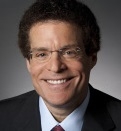Photo credit: Getty/vinnstock
While average premiums for employer-sponsored health insurance plans grew modestly this year relative to historic rates, a major factor driving that trend is the shift to high-deductible plans.
The average annual family premium for employer-sponsored health insurance is $18,142 this year--a 3 percent increase from the year prior, according to the Kaiser Family Foundation/Health Research & Educational Trust (HRET) 2016 Employer Health Benefits Survey. Last year, the average family premium rose 4 percent.

“Overall, it’s really been a very quiet year for coverage and changes in employer-sponsored plans,” HRET Chief Operating Officer Ken Johnson said on a call with reporters Wednesday. That, he noted, runs counter to predictions that the rise of the Affordable Care Act public exchanges would destabilize the employer-based insurance market.
The increase of 3 percent is also “strikingly low” by historical standards, Kaiser Family Foundation CEO Drew Altman said during the call.

Indeed, while premiums for employer-sponsored plans have risen 20 percent since 2011, that is a much slower rate than other recent five-year spans. The average family premium rose 63 percent from 2001 to 2006, according to the analysis.
The contrast between the high premium increases expected for ACA exchange plans and the modest increase in employer-sponsored plan premiums, added KFF researcher Gary Claxton, can be traced to the fact that the former is less about medical cost trend than it is “about getting the prices to the appropriate level” after initial mispricing.
But perhaps the most notable trend is the “shift in what insurance is for most Americans, from more comprehensive to skimpier coverage with more skin in the game,” according to Altman.

Case in point: The average annual deductible for employer-sponsored plans rose 12 percent to $1,478, and about half of workers now have plans with a deductible of $1,000 or more. An increasing share of workers also are moving to high-deductible plans with lower premiums that make use of health savings accounts or health reimbursement arrangements.
At the same time, fewer workers are enrolled in preferred provider organization plans, which tend to have higher premiums and wider networks, the analysis says.
To Claxton, the rise of high-deductible plans reflects the fact that the employer benefits community has embraced the idea of higher cost sharing and employees taking more responsibility for their own health.
But Altman sees it a slightly different way, saying the choice to offer higher-deductible plans is more of a pragmatic move. For an employer trying to keep premiums low for employees, “the only button that you can push is to increase the deductible,” he said. The trend, in his opinion, can be "both good and bad," but either way it is a significant shift in the American healthcare system.
The analysis also highlights employers’ continued interest in wellness programs, which according to Atlman have become “big business.”
A larger share of firms now offer health screening programs such as biometric screening and health risk assessments, the analysis notes. Further, 46 percent of small firms and 83 percent of large firms offer a program in at least one of these areas: smoking cessation; weight management; and behavioral or lifestyle coaching.